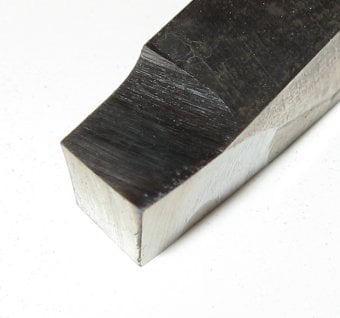
Lathe Tool Grinding
A set-by-set look at how to grind a left-handed (standard) lathe tool

A set-by-set look at how to grind a left-handed (standard) lathe tool
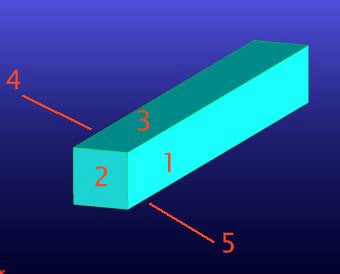
The image on the left shows a typical tool blank. There are 5 faces to consider at the cutting end, but only 3 of them require grinding. The back (4) surface and bottom (5) surface can be left untouched.
The remaining three faces require grinding along two axis each, however they can still be created within three grinding operations.
On most tools there is also a fourth grinding operation which is a radius on the tool tip. This radius increases tool life and improves surface finish.
The numbered faces in this image also indicate the order in which the three faces are cut.
Although there are three faces to cut and each of them has two angles to set, the front and side faces both have two critical angles and two non-critical. The top face has two angles, both of which are important.
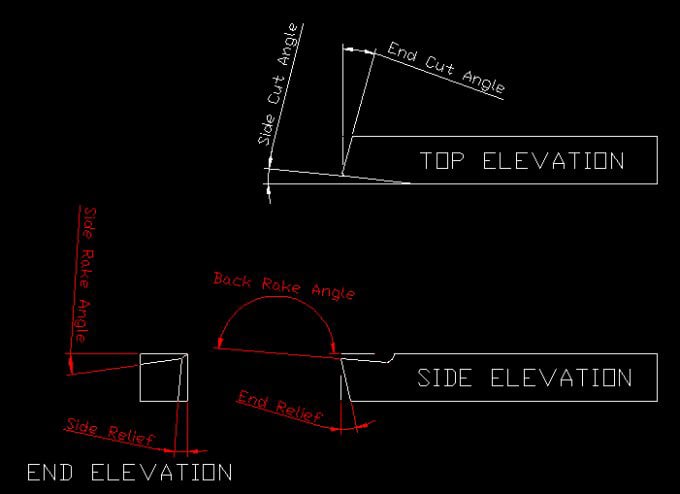
The end and side faces both have a clearance/relief angle and another edge cutting angle. The relief angles are needed to stop the tool rubbing. A tool with a greater relief angle usually has a lower rate of wear, but because there is less material to support the cutting edge the tool can break more easily, it also cannot conduct heat away so efficiently.
The top face has two rake angles because it can cut both 'into' and 'along' the work piece. These angles are identified as a 'side rake' angle and a 'back rake' angle. The rake angle sets the angle of shear for the cut. A greater rake angle reduces cutting forces and gives a better tool life, but too much rake can make the tool fragile.
The diagram below shows the terminology used to describe cutting tools and the dimensions shown in red are the critical ones.
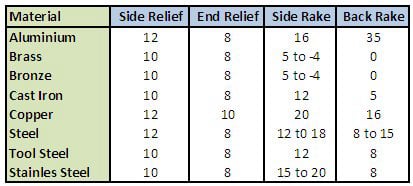
Different materials are best cut using slightly different angles and the table below gives some suggested angles for the critical faces; but in summary harder materials have a smaller rake angles and softer ones greater rake angles. The exception is Brass and bronze which are usually cut with zero or negative rake to prevent 'digging in' of the tool.
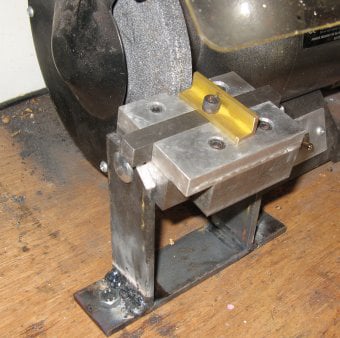
A Tool Grinding Rest
Accurate grinding of the required faces can more easily be achieved with an adjustable grinding rest.
The photo on the left shows a simple grinding rest which is only angle adjustable (not height) and it has a sliding fence which can be used to hold the cutter at a set angle as it travels across the edge of the grinding wheel.
This design was made to some plans drawn up by Rudy Kouhoupt.
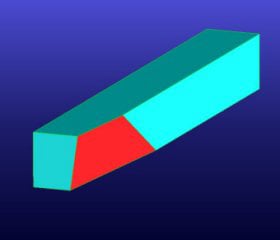
In this example we are making a normal left handed tool for the lathe.
The first face to be cut is the side face.
The grinding rest should be tipped to give the required side clearance relief and the fence adjusted to give the side cutting edge angle. The work can then be fed across the edge of the grinding wheel with a light inward pressure to make the cut.
The angle set by the table is the important angle here as is sets the side relief. The angle of the fence is non-critical and is simply used so that the side relief doesn't have to be ground all the way along the tool.
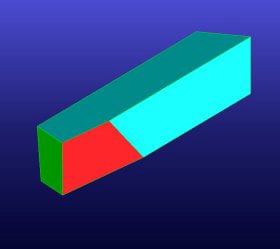
Second to be cut is the end face shown in green on the image.
For this face, the grinding rest needs to be tipped to give the required end relief angle and the fence adjusted to give the front cutting edge angle. Again the front cutting edge angle is not important, although it is usually set to make the tip and less than 90 º. The relief angle is the critical one.
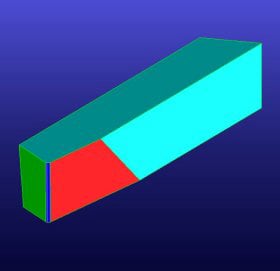
If the tool tip is to be radiused, it should be cut next.
This can be done as a freehand operation on the bench grinder, or by hand on a grinding slip, if only a very small radius is needed.
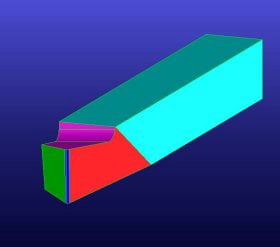
Finally the top face should be cut. This face has a side and back rake angle.
To cut the top face, the grinding rest was tipped to set the side rake angle and the fence angled to cut the back rake angle. Both these angles are important to make an effective tool.
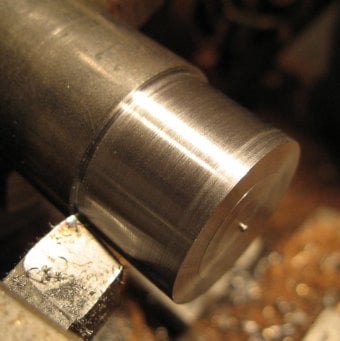
This photograph shows a freshly ground tool cutting a 25mm mild steel bar and leaving a good surface finish. Cutting pressure should be light and there should be no tool chatter or squealing.
HTML Website Creator